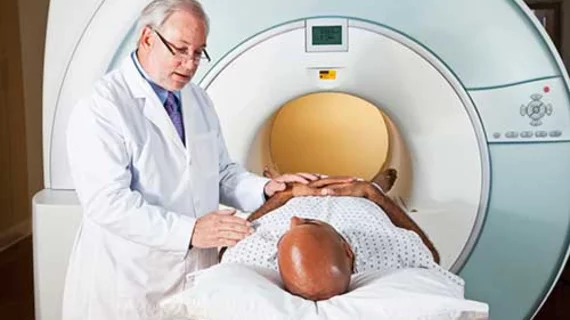Gadolinium-free imaging agent has strong potential as preferred contrast for MRI exams
A novel manganese-based contrast agent showed new promise for reducing radiology’s reliance on gadolinium-based agents, according to a recent study published in Investigative Radiology.
Massachusetts General Hospital researchers developed the imaging agent, Mn-PyC3A, to bypass safety concerns surrounding GBCAs, including their toxicity and gadolinium reportedly remaining in various parts of the body.
This most recent investigation compared Mn-PyC3A to an older manganese-based material approved for use in liver imaging but not currently marketed. Unlike the latter, which left high amounts of residual manganese in organs including the liver and bones, the novel agent was quickly and completely eliminated from the body.
And given that prior preclinical imaging studies have shown Mn-PyC3A to be just as effective as GBCAs for visualizing blood vessels and tumors, the material could be a safer alternative for individuals undergoing MRI exams.
"This is obviously important for patients with chronic kidney disease and other forms of renal insufficiency that might require careful risk/benefit analysis before undergoing a GBCA-enhanced MRI, but we can also envision giving Mn-PyC3A to any patient requiring a contrast-enhanced MRI," Eric M. Gale, PhD, assistant professor of radiology at Harvard Medical School, which co-created Mn-PyC3A, said in a statement on Tuesday.
The study authors utilized PET-MR imaging to compare the two contrast agents in rat models with renal impairment. Whereas clinical GBCAs are eliminated entirely via the kidneys, a greater proportion of Mn-PyC3A is cleared through the liver.
Additionally, Gale et al. sought to quantify the manganese and gadolinium retained in tissue seven days after administering the novel agent, comparing results to a state-of-the-art GBCA known as gadoterate. Testing showed that the body eliminated significantly greater quantities of Mn-PyC3A compared to gadoterate, underscoring its potential.
“Clinical GBCAs are eliminated only through the kidney, and thus remain in renally impaired patients for longer periods resulting in increased gadolinium exposure,” Iris Yuwen Zhou, PhD, an MGH researcher and instructor in Radiology at Harvard, explained. “Our imaging data shows how for Mn-PyC3A, the liver compensates for diminished renal function and ensures rapid and complete elimination of Mn-PyC3A.”
Read the entire study here.

